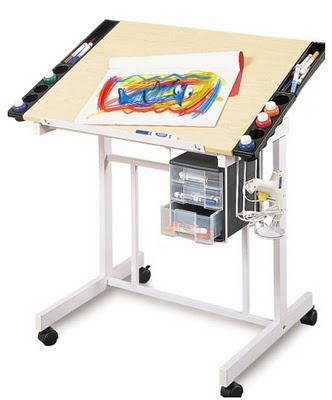Category: Apple Tablet
iOS, macOS and the percentages…

I remember when the Mac first replaced what came before it.
Before the Mac was invented, my profession was totally different. I stood up for a start, and produced my work using rotring pens, white boards and pasted on typeset copy.
It was a physical job, you interacted directly with the content you were creating, keeping your working area clean and your camera work perfect was a daily job.

Then, slowly the Mac started to encroach – as it’s technology improved so the gradual takeover began.
No-one really noticed (it took years) and initially the outputted type from the Mac, worked alongside the traditional skills of pasted up copy, rotring pens and the like.
But as the Mac speeded up, the OS improved, the connectivity worked, it made more and more sense that work started to be completely done on that tiny, 8″ black and white screen.
Today, no-one would even attempt to to manually paste up work, it’s gone, forever, replaced by a perfect symbiosis of hardware, input mechanics, network infrastructure and software.
But technology doesn’t stand still, the next big thing is just around the corner, according to Apple.
iOS and the iPad is that next big thing, the perfect expression of Steve Jobs’ vision of computing.
I would agree to this statement, generally.
The iOS/iPad is the next logical step, remove the input mechanic completely and interact directly with the content you are creating, just as we did all those years ago before the Mac was envisaged.
The problem is, iOS and iPad just aren’t ready to take over, not yet.
But Apple’s not having that – the mantra is that for 80%, 90%, 95% (insert your percentage of choice here) of your job, the iPad is all you need.
But that’s not good enough.
Think back to when the Mac was postulating the same question – it didn’t replace the traditional techniques straight away, it augmented them and helped them, until it was ready.
So you needed more than the Mac, you need a Mac and also all the expensive traditional equipment also, until, years later you could do ALL your work on the Mac (not just 90% of it).
The same is true today – yes, I personally could probably do 50% of my work on an iPad.
You may be different, I’m a graphic designer, but if you were a writer or novelist, you could do a very high percentage of your work on an iPad.
But until it’s 100%, you need an iPad and a Mac.
Even if you can do 99% of your work on an iPad, you need a Mac to do the 1%.
If you already have a Mac then the investment is not so bad – you can work on the iPad, and keep the old Mac lying around for that 1% until at some point in the future you can put that Mac in a draw and embrace the glorious future.
But that’s a very expensive 1% if you’re buying new.
If you’re buying new today and someone says you can do 90% of your work on an iPad, you need to also buy a Mac to do the other 10%.
If that’s the case, you’re better off buying a Mac only – you can do 100% of your work on it today.
So my point is – Apple’s has the wrong approach and it’s the reason why the iPad isn’t as successful as it could be.
They need to (internally) plan for the Mac’s eventual demise, but until the iPad can do 100% of the work, it needs to support the Mac, work alongside it and be developed with it in mind.
Currently it looks like Apple is two companies, each pulling in different directions.
If they do this, then the iPad’s future is assured, but I will miss that perfect symbiosis of hardware, input mechanics, network infrastructure and software – the Mac.

The many (alleged) lives of Microsoft’s Office for iOS

The many (alleged) lives of Microsoft’s Office for iOS.
I don’t envy the new CEO of Microsoft in the decision to whether or not release the quite clearly ‘finished and ready to go’ Microsoft Office for iPad.
Should Microsoft release it, giving their main competitor in the tablet market and advantage?
The iPad has already done very well thank you in the business sector, without having even a smell of a Microsoft product on it, and releasing it will further give the last few business that are still waiting for Microsoft’s ‘answer’ to tablet computing to come along, even less reason to stop computers with Apple logos on them coming over the threshold.
This is what happens when you try to have your cake and eat it – Microsoft cannot be a software supplier to OEM’s, and also have a hardware line that competes with them.
Apple knows this, and have known it since Steve Jobs came back and pointed it out to them – they’ve exploited this USP ever since. Witness the unfolding ‘in and out’ behaviour of Google – they also cannot be a software supplier to OEM’s, and also have a hardware line that competes with them.
However, the once question that nobody is asking is – how much will it cost?
Way back when Apple first released their selection of apps for the iPhone, the cost was surprisingly minuscule, $2.99 if I remember correctly.
There was much gnashing of teeth from developers at that point, how were they supposed to make money when Apple effectively set the price so low?
Well, the reason is because Apple need to do the opposite to Microsoft – they make money on software and then the OEM’s make little or no money on the hardware, with Apple, it has to be the other way around.
So, how much will it be Microsoft?
Releasing a stripped down Office app for the iPad (it will have to be), and charge anything above $99, and you may as well not bother.
Sell it cheap, to compete with iWork and you won’t be able to make a profit – all your money comes from software.
Make it free with an Office 365 subscription is a none starter – nobody will choose that when there are many ‘just good enough’ Office-compatible apps on the iPad already available.
So, you can see why Ballmer hesitated in releasing it – whatever they do, it will hurt them in some way.
What Nadella does next will be worth watching.
Now that’s an interesting bar chart…
Apple Mac owns 90% market share for ‘premium’ PCs costing over $1,000
Via MacDailyNews & TheBoyGenius.
Although MDN is making a valid point here, in that Apple has 90% market share of the markets they operate in, it’s not surprising that this percentage is going up.
As the PC OEM’s race to the bottom, making more and more cheap laptops (netbooks), they exit the higher end of the market, effectively leaving this predominantly for Apple.
However it’s that bar chart that caught my eye.
I’d never really considered it, but Apple does indeed compete at the low end, it’s just that they do it differently to all the others.
Steve Jobs has said that netbooks are really a price-based solution to consumers wanting cheaper laptops.
They don’t do anything well, and make for a compromised, limited computer experience, but at least the OEM’s have a product at that price point – therefore soaking up sales to that segment of the buying public.
Apple does the same, but doesn’t compromise.
When Apple wants to hit a price point, they make sure that the product that fits that price point, does everything it’s designed to do perfectly, whilst still making a decent profit for them.
Yes, the further you go down the price scale, the less features each product has, but that’s not the point, they may have missing features, but every feature they do have, works perfectly without compromise.
Calacanis’ marketing machine…
Taking Jason Calacanis to task for being an attention-whore | Edible Apple
Posted using ShareThis
But despite all of Calacanis’ obvious tech-savvy, and the ability to manipulate the interwebs to give his persona a boost, he doesn’t seem to realise that it’s not all about the numbers – two old marketing mantra’s come to mind…
1) It’s the quality, not the quantity of your audience that truly matters in the long run
2) You can fool some of the people some of the time, but not all the people all the time
The last two tricks he’s played on us, (the famous anti-Apple rant and now this fake iPad story), are cynically planned to boost his following.
People will get wise – this is not a trick he can keep on playing.
Steve (allegedly) speaks…
Employee meeting at Apple reveals some juicy info.
It’s rare that we see past Steve’s RDF and get a taste of what his real motivations are, to-wit: comments concerning Adobe:
They are lazy, Jobs says. They have all this potential to do interesting things but they just refuse to do it. They don’t do anything with the approaches that Apple is taking, like Carbon. Apple does not support Flash because it is so buggy, he says. Whenever a Mac crashes more often than not it’s because of Flash. No one will be using Flash, he says. The world is moving to HTML5.
In my view this is the real reason why we don’t see Flash on the iPhone and iPad, Steve’s angry that they haven’t embraced Apple’s development environment fully, if at all.
It’s common knowledge that Adobe use their own cross-platform development software so that they can create software for Apple and Windows in tandem. As far as I know, Apple’s development kits allow you to do just that as well.
Steve’s bottom line – don’t use Carbon, we won’t use Flash.



